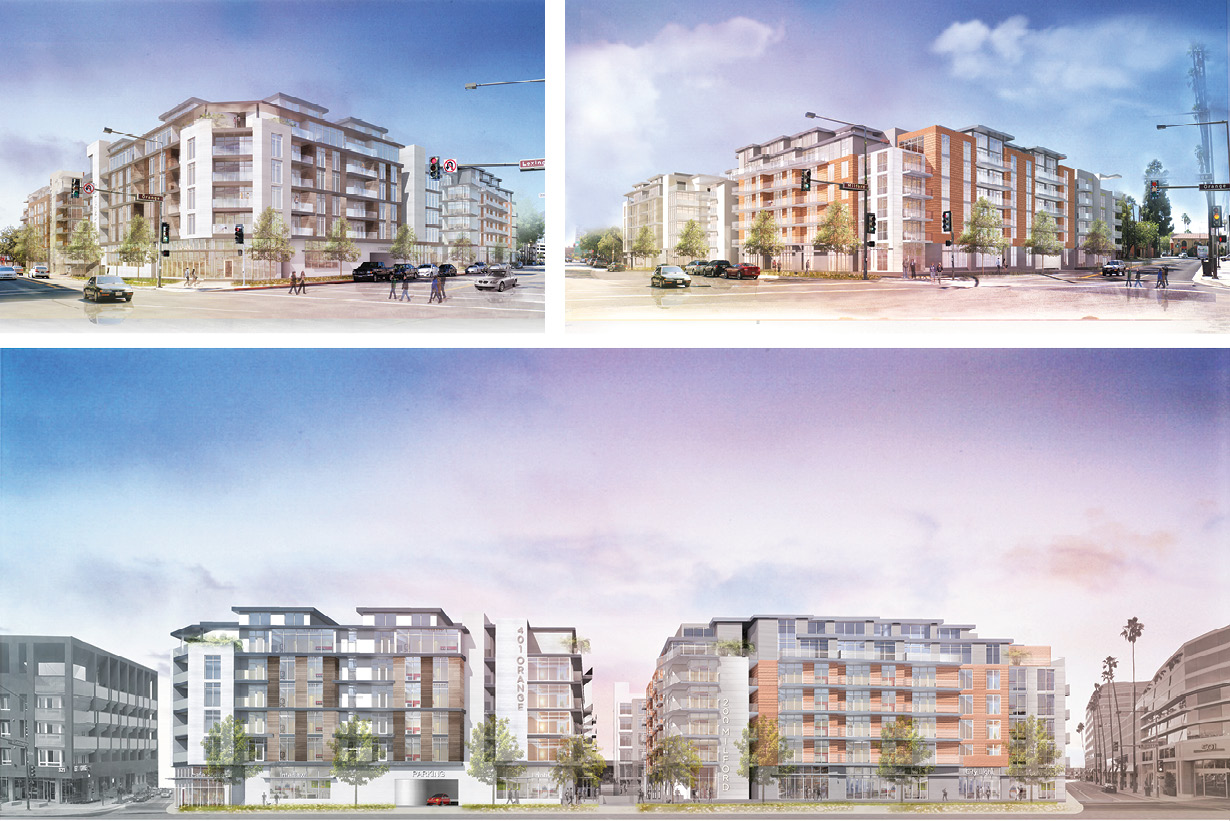KFA moderated an important affordable housing discussion panel at the 2015 SCANPH Conference held at the JW Marriott hotel in Downtown Los Angeles last month. As an expert in adaptive reuse design, KFA Principal, John Arnold, AIA, lead the focused conversation on the topic of the conversion of underused commercial buildings into affordable housing projects. For over 20 years, KFA has been at the forefront of the adaptive reuse movement and has designed and assisted its clients in finding solutions for transforming historic buildings into modern affordable homes, market-rate residences, hotels, and retail establishments.
The panel showcased a few of KFA’s affordable housing clients and the projects they are developing and completing to provide safe, comfortable homes and permanent supportive housing for formerly homeless individuals, seniors, and individuals with special needs. The panel featured Maurice Ramirez, Executive Vice President, AMCAL Multi-Housing; Cristian Ahumada, Executive Director, Clifford Beers Housing; Jesse Slansky, Real Estate Director, West Hollywood Community Housing Corporation; and Sasha Truong, Project Manager, Skid Row Housing Trust. Each panelist spoke about their recently completed adaptive reuse affordable housing projects, and answered questions pertaining to trends, financing, design, development, politics, and overcoming unforeseen obstacles.
Cristian Ahumada presented Clifford Beers Housings’ 28th Street Apartments, a conversion of the historic South LA YMCA into 48 units of affordable housing. One of the obstacles he presented was the need to reduce the existing housing unit count in order to adhere to new square footage and unit amenity requirements, a process, which can be politically and publicly difficult to overcome. Reducing the unit count can reduce the affordability level for future tenants. Because of the building’s historic status, the historic building code was used to help mitigate some of the difficulties encountered.
Maurice Ramirez of AMCAL discussed the recently completed Hollenbeck Terrace Apartments, an adaptive reuse of the former Linda Vista Hospital into 120 modern senior residences with support services. He provided invaluable insight into the multiple construction issues they encountered during each phase of the project. Maurice also provided a detailed explanation of the budgetary process and further broke down the public and private funding sources available for sizeable adaptive reuse projects.
WHCHC’s Jesse Slansky presented the adaptive reuse of a vacant, substandard apartment building in West Hollywood that was transformed into the Hayworth House, an affordable housing community for low-income seniors. He explained the local political issues WHCHC faced during the development and construction of this adaptive reuse project. Together with KFA, they were collaboratively able to find solutions for universal design, accessibility, community spaces, modernization, and building and unit configurations.
Sasha Truong with Skid Row Housing Trust presented the New Pershing Apartments, which opened in 2015. This project is a reconstruction of a three-story Single Room Occupancy (SRO) Hotel at the southeast corner of 5th and Main. It is one of the last Victorian era buildings left in Downtown Los Angeles and was converted into 69 units of affordable housing for formerly homeless individuals who have special needs or require rehabilitative care. She discussed the importance of being committed to design equity and the environment in which tenants live as being vital to a person’s recovery and stabilization.
They all agreed that the adaptive reuse of historic structures for affordable housing can provide a great benefit to the residents, while preserving a valued building within a community by giving it new life and a greater purpose. Reused buildings encounter much less resistance in communities than new construction.
Generally, historic buildings have more common areas and outdoor open space than new construction. Residents benefit from the organized social interactions and conversations that spring up in the community gathering spaces such as a communal garden, courtyard, or community kitchen. Historically significant buildings used for adaptive reuse projects are often centrally located near urban cores with attractive amenities, as well as providing quick and easy access to major employment centers, public transit, schools and daycares, retail options, health facilities, and recreational opportunities. Close proximity to needed services is valuable to residents who cannot afford a vehicle or can no longer drive, and to children and teens who walk to school and to nearby community activities.
Adaptive reuse can also serve as a strategy to change attitudes and stereotypes that often accompany affordable housing development. By restoring a valued structure within the community, these projects can help the communities view affordable housing as an asset instead of a detriment. Further, adaptive reuse of historic buildings for affordable housing can increase community pride as it increases nearby property values. Adaptive reuse can further contribute to downtown revitalization efforts by restoring a unique sensibility and preserving character in the heart of a city.
All panelists agreed that adaptive reuse projects require complex funding streams, and that it is becoming increasingly difficult to put deals together. In the future, this will require more creativity in finding sites, and future rehabilitation projects for affordable housing may shift from adaptive reuse conversions to straight-up rehabs of existing multi-family buildings.
We appreciate our clients’ participation and the time they took to be panelists and answer difficult questions regarding the adaptive reuse process.



